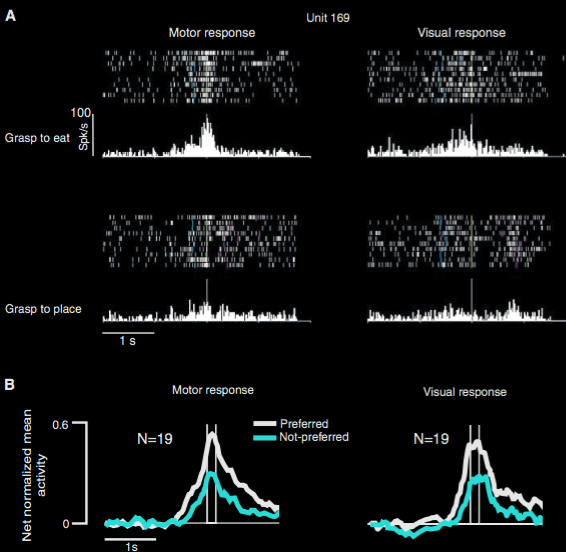Click here and press the right key for the next slide.
(This may not work on mobile or ipad. You can try using chrome or firefox, but even that may fail. Sorry.)
also ...
Press the left key to go backwards (or swipe right)
Press n to toggle whether notes are shown (or add '?notes' to the url before the #)
Press m or double tap to slide thumbnails (menu)
Press ? at any time to show the keyboard shortcuts
The Motor Theory of Goal Tracking

Fogassi et al 2005, figure 5
The Double Life of Motor Representation
What are those motor representations doing here?
Motor Theory of Goal Tracking (including Speech Perception)

Sinigalia & Butterfill 2015, figure 1
Pure goal-tracking could,
in principle,
be implemented motorically.
Motor Conjecture
In 9-month-olds,
all pure goal-tracking is explained by the Motor Theory;
---
‘we believe that the three proposed mechanisms of goal attribution [...] complement each other’
Csibra & Gergely, 2007 p. 74
How?
Infants can track goals from nine months of age (or earlier).
Why?
In infants (and adults),
goal-tracking is limited by their abilities to act.
The ‘Teleological Stance’
~ The goals of an action are those outcomes which the means is a best available way of bringing about.
Csibra & Gergely
Tracking
1. This means, m, has been adopted (observation)
2. G is an outcome such that: m is a best available* way of bringing G about
3. ∴ G is a goal of the observed action
‘simulation is clearly a natural and effective way to find the most efficient action towards a goal state.’
Csibra & Gergely, 2007 p. 72
| The Simple View | Motor Conjecture | |
| What is the function to be computed? | [Teleological Stance] | [Teleological Stance] |
| How is this function computed? | By reasoning from beliefs. | By using motor processes ‘in reverse’. |
| Why is goal-tracking limited by action ability? | ??? | Because both rely on motor processes. |